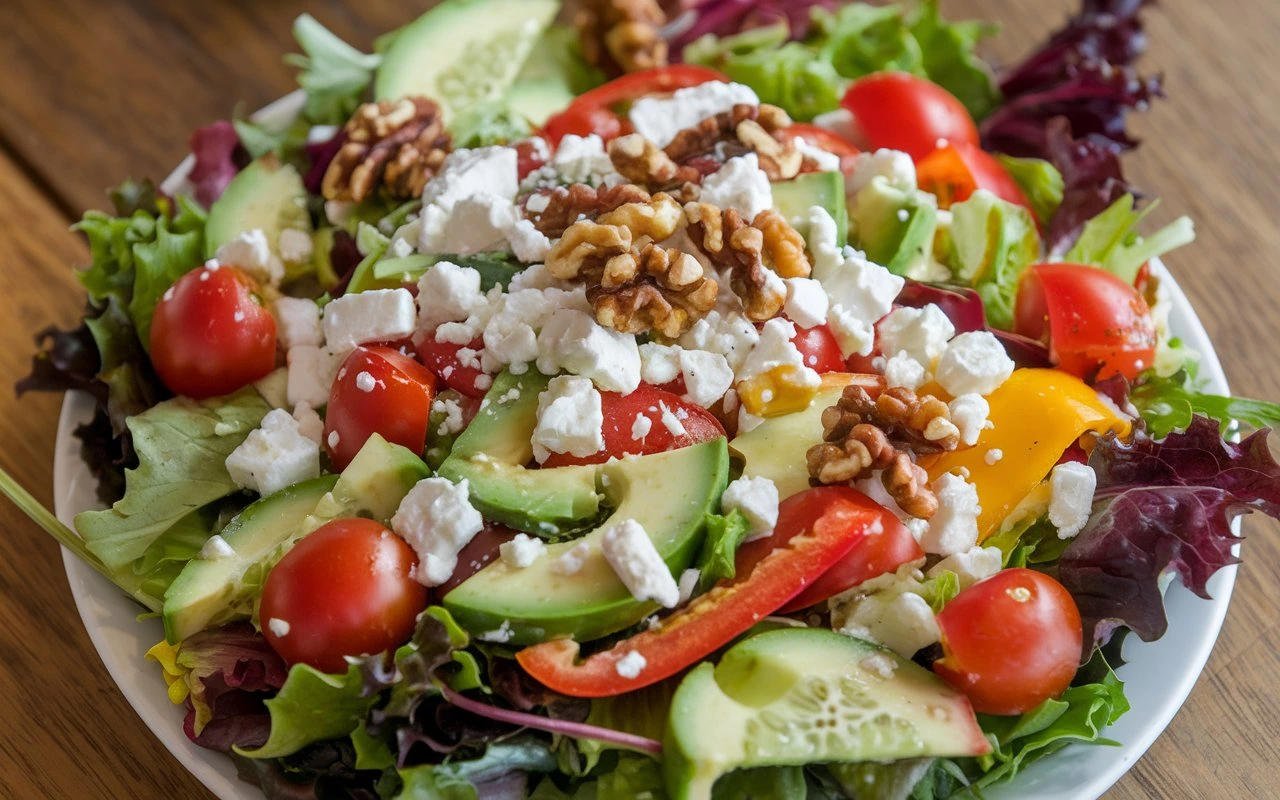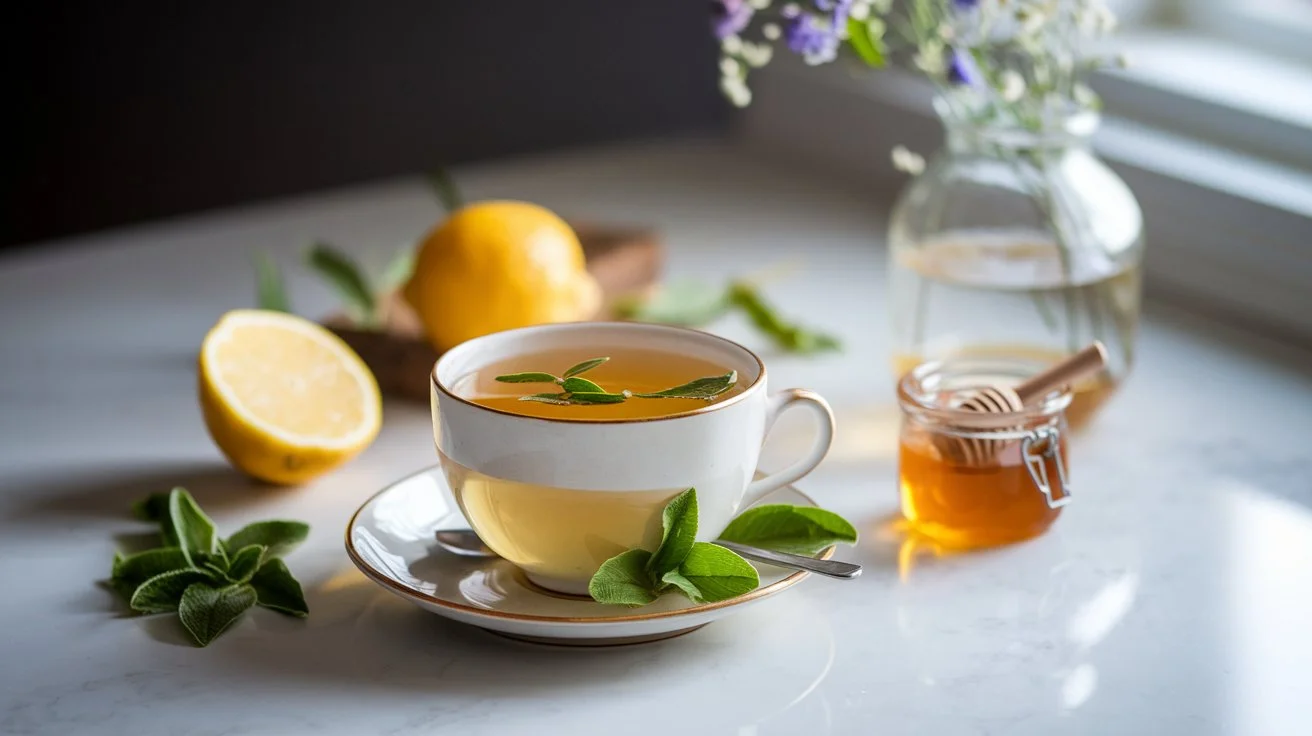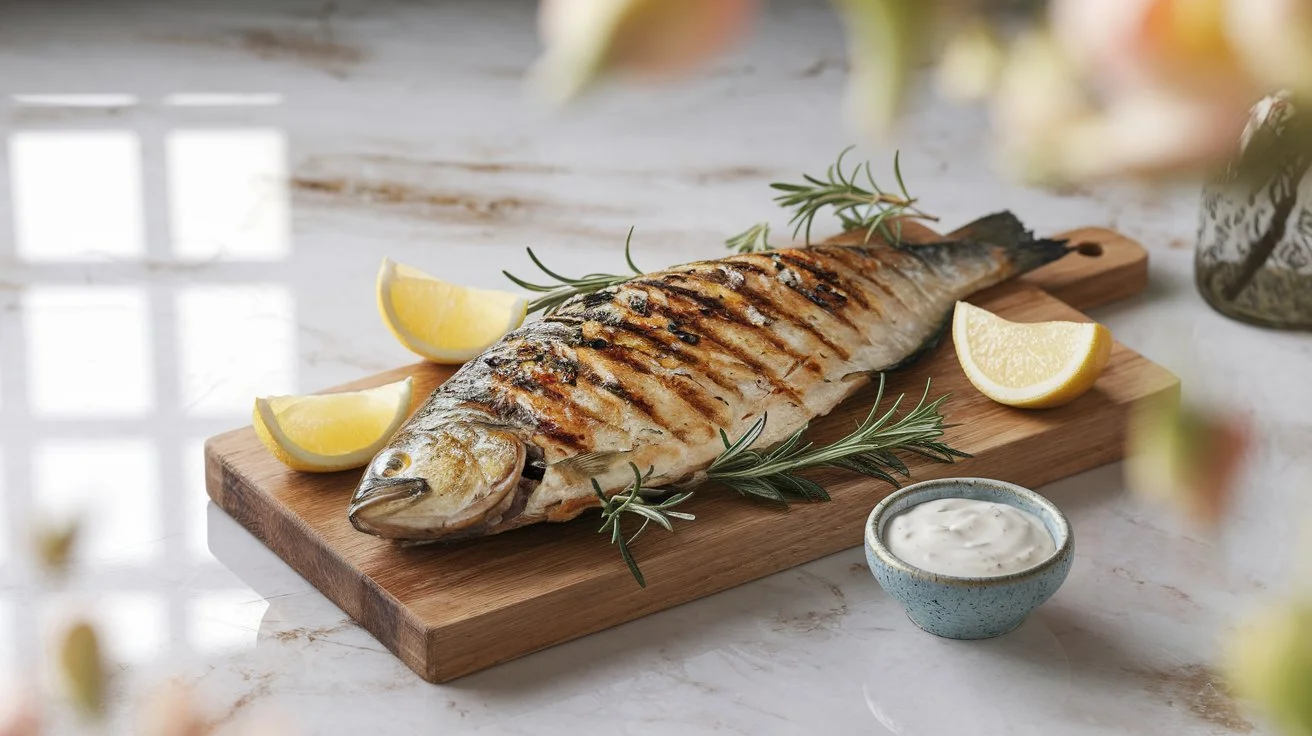How to Categorize Salad Recipes: A Comprehensive Guide
Salads are versatile, delightful, and nutritious. Yet, knowing how to categorize salad recipes can unlock a world of possibilities for meal planning, recipe creation, and cultural exploration. From traditional leafy greens to intricate composed creations and even dessert options, salads reflect a harmonious blend of ingredients, techniques, and influences. This guide dives deep into understanding salad classifications and their many subcategories while offering insights into cultural and regional variations that make each type truly unique.
Introduction to Salad Classification
Introduction to Salad Classification
Salads, in their myriad forms, have long been celebrated for their simplicity, adaptability, and ability to elevate any meal. But categorizing them can feel like an overwhelming task. Why? Because salads don’t fit into one neat box. They’re bound by creativity, not rigid rules. Yet, classifying salads is essential—it helps cooks and food enthusiasts understand what defines each type, which ingredients pair well, and how to present these dishes effectively.
At its core, salad classification relies on two factors: the ingredients used and the way the salad is presented. While a simple garden salad might seem intuitive, a composed salad, layered with care and precision, tells an entirely different story. So, whether you’re curating recipes for a dinner party or trying to expand your culinary repertoire, learning to classify salads is your first step toward culinary mastery.
Understanding the Importance of Categorizing Salad Recipes
Why does it matter how to categorize salad recipes? The short answer: it makes life in the kitchen more organized and enjoyable. By knowing salad types, you can tailor your choices to suit specific events, dietary needs, or even the season.
For instance, understanding that a bound salad like potato salad offers heartiness means it’s ideal for a picnic, while a dessert salad serves as the perfect sweet note after a meal. Moreover, categorization enables chefs to tweak existing recipes creatively, adding flair while still respecting their foundations. It also helps home cooks accommodate various dietary preferences, from plant-based meals to high-protein diets.
Categorizing salads also bridges the gap between cultures. A Mediterranean tabbouleh showcases fresh parsley and bulgur, while an Asian papaya salad celebrates vibrant textures and bold flavors. Through categorization, you not only learn recipes but also appreciate the cultural stories behind them. How exciting is that?
Historical Perspectives on Salad Classifications
The art of classifying salad recipes is not just modern culinary jargon. Historically, salads trace back to ancient Rome and Greece, where raw greens were dressed simply with oil, salt, and vinegar. The word “salad” itself originates from the Latin “salata,” meaning salted, hinting at its basic preparation.
Over centuries, salads transformed from rudimentary dishes into sophisticated culinary expressions. Medieval European salads, for example, emphasized fresh greens, herbs, and flowers, while 19th-century French chefs brought forth the concept of composed salads like Nicoise. Fast forward to today, and salads have evolved into an extraordinary spectrum of flavors, textures, and presentations.
Classifications, historically speaking, were loosely based on ingredients and preparation styles. Bound salads emerged during the Industrial Age as convenient, make-ahead meals, while dessert salads gained popularity in the 20th century, catering to America’s love for sweet, innovative dishes. Knowing this context enriches our appreciation for salads, showing us that they’ve always been more than just a side dish—they’re an art form!
Primary Categories of Salads
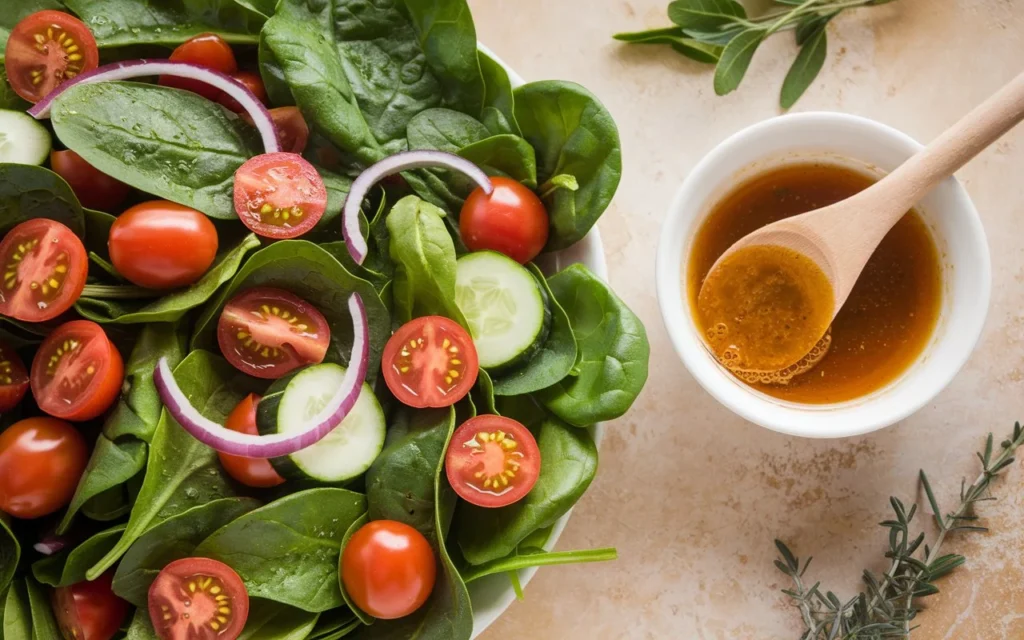
Primary Categories of Salads
When it comes to understanding how to categorize salad recipes, it’s crucial to start with the foundational types. Salads, though diverse, can be grouped into four primary categories: green, bound, composed, and dessert. These classifications simplify the way we approach recipes and allow us to appreciate the versatility of this beloved dish.
Each type serves a distinct purpose. Green salads are fresh and vibrant, bound salads offer hearty comfort, composed salads showcase elegance, and dessert salads surprise with sweetness. Together, they create a framework that guides cooks, hosts, and foodies in selecting the perfect salad for any occasion. In modern cuisine, these categories matter because they provide inspiration while respecting culinary traditions.
Green Salads: The Foundation of Freshness
Green salads are the quintessential image of health and simplicity. At their core, they rely on leafy greens—think lettuce, spinach, arugula, or kale—paired with raw vegetables like tomatoes, cucumbers, and carrots. The dressing? Light and zesty, such as vinaigrettes or lemon juice, to let the greens shine.
Their flexibility makes green salads a staple. You can keep them basic, like a crisp garden salad, or add depth with croutons, parmesan, and anchovy-rich dressing, as in a classic Caesar salad. These salads work beautifully as starters, sides, or even main courses when topped with grilled chicken or tofu.
What’s exciting about green salads is their adaptability. They embrace whatever is seasonal or on hand, making them ideal for quick meals. Plus, their nutritional value—fiber, vitamins, and hydration—cements their place as the foundation of fresh, wholesome eating.
Bound Salads: Hearty and Satisfying Combinations
Bound salads are where comfort meets practicality. The term “bound” refers to their creamy base, often mayonnaise or yogurt, which holds the ingredients together. These salads are typically served cold and are ideal for picnics, potlucks, or make-ahead lunches.
Take, for example, the potato salad, where tender potatoes are combined with eggs, pickles, and a creamy dressing. Or consider a chicken salad, where shredded chicken is mixed with celery, grapes, and mayonnaise. Bound salads emphasize texture and richness, making them hearty enough to satisfy as a standalone dish.
The beauty of these salads lies in their ability to transform humble ingredients into something indulgent yet versatile. They’re easy to prepare, store well, and can be customized endlessly, whether you’re adding fresh herbs, crunchy nuts, or tangy mustard to elevate the flavor.
Composed Salads: Artistry on a Plate
Composed salads are the showstoppers of the salad world. Unlike tossed salads, their ingredients are carefully arranged for visual appeal, turning them into edible works of art. Presentation is everything, and these salads often highlight fresh, high-quality ingredients.
The Nicoise salad, for instance, features an elegant layout of tuna, hard-boiled eggs, green beans, and olives. Similarly, the Caprese salad celebrates simplicity with alternating slices of ripe tomatoes, mozzarella, and basil, drizzled with olive oil and balsamic vinegar.
These salads are perfect for entertaining. Their thoughtful arrangement elevates any table, showcasing culinary finesse while allowing guests to savor individual components. And although they may look intricate, their preparation often involves little more than strategic plating—a win for both beauty and efficiency.
Dessert Salads: Sweet Conclusions
For a delightful twist, dessert salads bring sweetness to the table. These salads combine fruits, gelatin, cream, and even marshmallows to create refreshing treats that double as both a dish and a dessert.
The ambrosia salad is a classic example, blending oranges, pineapple, coconut, and whipped cream. Another favorite is the Waldorf salad, which balances crisp apples, celery, walnuts, and grapes with a light dressing.
Dessert salads challenge the conventional idea of salads, showcasing how versatile the concept can be. Perfect for picnics, holidays, or any occasion requiring a touch of whimsy, these salads offer a refreshing end to a meal while satisfying sweet cravings.
Subcategories and Specialized Salad Types
Subcategories and Specialized Salad Types
Beyond the primary categories, salads branch into intriguing subcategories defined by their ingredients, preparation, and presentation. These specialized salads reflect the endless creativity and adaptability of the dish. They cater to specific tastes, dietary needs, and occasions, allowing cooks to experiment with textures, flavors, and cultural influences.
Subcategories like pasta, grain, protein-based, and fruit salads emphasize the versatility of salads, proving they can be a full meal, a satisfying side, or a sweet treat. By exploring these subcategories, you can take your understanding of how to categorize salad recipes to a whole new level.
Pasta Salads: A Fusion of Grains and Greens
Pasta salads are beloved for their hearty, versatile nature. As the name suggests, pasta forms the backbone of these dishes, which are often combined with fresh vegetables, proteins, and flavorful dressings. Whether served warm or cold, pasta salads are a crowd-pleaser at barbecues, potlucks, and casual dinners.
An Italian pasta salad exemplifies this subcategory. Packed with rotini, olives, tomatoes, and a tangy vinaigrette, it delivers bold flavors and visual appeal. Another classic is the macaroni salad, a creamy delight made with elbow macaroni, mayonnaise, and crunchy vegetables like celery and carrots.
The beauty of pasta salads lies in their endless customization. Add grilled chicken for protein, roasted vegetables for depth, or herbs like basil for freshness. They’re not just delicious but also practical—easy to prepare in advance and adaptable to seasonal ingredients.
Grain Salads: Nutritious and Filling Options
Grain salads combine healthiness and heartiness, making them ideal for satisfying hunger while boosting nutrition. They use wholesome grains like quinoa, farro, or couscous as their base, often paired with vibrant vegetables, nuts, and dressings. These salads are rich in fiber, protein, and essential nutrients, perfect for a balanced diet.
A popular example is quinoa salad, featuring fluffy quinoa mixed with avocado, black beans, and lime dressing for a zesty touch. Another standout is tabbouleh, a Middle Eastern favorite made with bulgur, parsley, mint, and tomatoes, dressed lightly with olive oil and lemon juice.
Grain salads are versatile enough to be mains or sides. Their earthy flavors pair well with both sweet and savory elements, offering endless combinations for creative cooks. Plus, they’re excellent for meal prep, staying fresh for days when refrigerated.
Protein-Based Salads: Incorporating Meats and Alternatives
Protein-based salads are hearty and fulfilling, designed to serve as a complete meal. They focus on protein-rich ingredients like chicken, fish, tofu, beans, or lentils, ensuring they meet dietary needs while delivering on taste.
The Cobb salad is a quintessential example. It layers grilled chicken, avocado, hard-boiled eggs, and blue cheese over a bed of greens, all tied together with a savory dressing. Another popular choice is a lentil salad, which pairs protein-packed lentils with roasted vegetables and a tangy vinaigrette.
These salads are a perfect choice for those seeking high-energy meals. They’re customizable for dietary restrictions—swap tuna for chickpeas or tofu for grilled tempeh. With a focus on quality ingredients, protein-based salads are as nutritious as they are indulgent.
Fruit Salads: A Symphony of Natural Sugars
Fruit salads are a celebration of nature’s sweetness, with fresh fruits taking center stage. They’re light, refreshing, and perfect for summer picnics, brunches, or as a healthy dessert option. The combinations are endless, offering a burst of colors and flavors.
A tropical fruit salad might include pineapple, mango, and kiwi, topped with a drizzle of lime juice for tanginess. Alternatively, a berry medley with mint creates a simple yet stunning mix of strawberries, blueberries, and raspberries, garnished with fresh mint leaves.
What makes fruit salads stand out is their simplicity and appeal to all ages. They can be enhanced with a dollop of yogurt, a sprinkle of nuts, or even a hint of honey for added sweetness. Versatile and vibrant, fruit salads are proof that healthy can also mean delicious.
Regional and Cultural Salad Variations
Regional and Cultural Salad Variations in How to Categorize Salad Recipes
Salads are more than just combinations of ingredients—they’re cultural snapshots. Across the globe, geography and tradition have shaped unique salad styles, reflecting local flavors, resources, and culinary philosophies. From the light, herbaceous dishes of the Mediterranean to the bold and spicy creations of Asia, salads are as diverse as the regions they hail from.
Understanding these variations enriches our appreciation of how to categorize salad recipes. It’s not just about ingredients but also techniques, presentation, and the stories they tell. Exploring regional styles introduces us to new textures, flavors, and ideas, expanding our culinary horizons.
Mediterranean Salads in How to Categorize Salad Recipes: A Blend of Health and Flavor
Mediterranean salads are a perfect marriage of simplicity and nutrition. These dishes prioritize fresh, wholesome ingredients like olives, tomatoes, cucumbers, and feta, tied together with olive oil and herbs. They embody the Mediterranean diet’s focus on vibrant, unprocessed foods.
The Greek salad is a prime example, featuring chunks of tomatoes, cucumbers, red onions, and Kalamata olives, topped with creamy feta and oregano. Similarly, tabbouleh, a staple in Levantine cuisine, highlights parsley, bulgur, and mint, with a squeeze of lemon for zest.
Mediterranean salads are not only flavorful but also highly adaptable. Whether served as a side dish or a light main course, they deliver health benefits without sacrificing taste, making them a global favorite.
Asian Salads in How to Categorize Salad Recipes: A Harmony of Taste and Texture
Asian salads are all about balance—combining sweet, salty, sour, and spicy flavors in a single bite. They utilize unique ingredients like sesame oil, soy sauce, lime, and fresh herbs to create bold yet harmonious dishes.
The Thai papaya salad is a vibrant mix of shredded green papaya, chilies, lime juice, and peanuts, offering a refreshing crunch with a spicy kick. Another favorite is the seaweed salad, a Japanese delicacy made with marinated seaweed, sesame seeds, and rice vinegar, delivering umami in every bite.
These salads highlight the importance of texture and bold flavors. Their diversity ensures there’s something for everyone, from light, tangy options to hearty, protein-rich variations.
American Salads in How to Categorize Salad Recipes: Diversity in Ingredients and Styles
American cuisine brings its characteristic creativity to salads, resulting in a variety of dishes that are both hearty and diverse. From comfort-food-inspired salads to fresh and innovative takes, American salads often defy strict categorization.
The Chef’s salad is a classic example, combining greens, hard-boiled eggs, meats, and cheeses in a substantial meal. The chopped salad is another staple, mixing finely diced vegetables, proteins, and dressings for a uniform and satisfying bite.
American salads embrace inclusivity, drawing inspiration from other cultures while creating something uniquely their own. This diversity is what makes them so appealing—they cater to any occasion, dietary preference, or flavor profile.
African and Middle Eastern Salads in How to Categorize Salad Recipes: Rich Traditions and Ingredients
African and Middle Eastern salads are deeply rooted in tradition, showcasing bold spices, fresh vegetables, and distinctive ingredients. These salads often tell stories of their origins, reflecting the regions’ vibrant culinary heritages.
The Moroccan carrot salad exemplifies this, blending cooked carrots with cumin, paprika, and a touch of orange juice for a sweet-savory delight. Similarly, fattoush, a Middle Eastern favorite, combines crisp pita bread, fresh greens, and sumac for a tangy, satisfying experience.
These salads celebrate regional flavors and textures, offering a sensory journey that’s both nourishing and intriguing. They stand out for their ability to transform simple ingredients into extraordinary dishes.
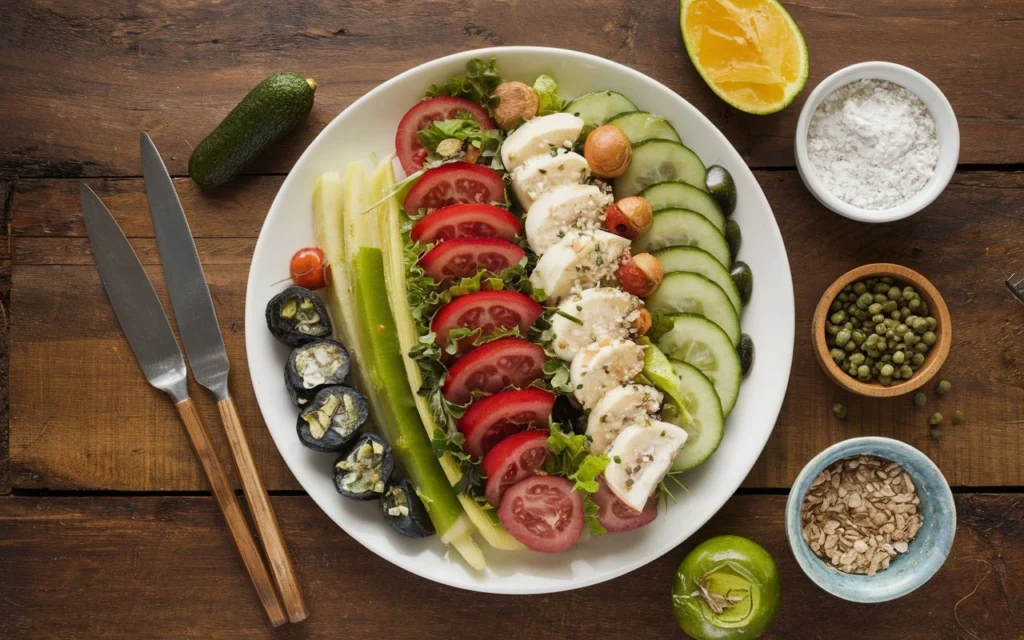
FAQs About How to Categorize Salad Recipes
What are the main categories of salads?
Salads are classified into four main categories: green, bound, composed, and dessert salads.
How do ingredients influence salad classification?
Ingredients determine a salad’s type, whether leafy greens, proteins, grains, or fruits.
Can a salad belong to multiple categories?
Yes, some salads, like a fruit-laden green salad, may overlap categories.
How do dressings affect salad categorization?
Dressings can define a salad’s style, such as vinaigrettes for green salads or creamy dressings for bound salads.
What role do cultural influences play in salad types?
Cultural traditions shape ingredient choices, preparation, and presentation, leading to unique regional salads.
How can I create my own salad category?
Experiment by mixing unconventional ingredients or combining techniques from multiple regions to craft a new salad type.
Conclusion: Summarizing the Art of How to Categorize Salad Recipes
Salads are more than side dishes—they’re expressions of creativity, culture, and nutrition. By learning how to categorize salad recipes, you open the door to endless culinary exploration. From foundational types to regional specialties, salads offer versatility and inspiration. So, why not experiment? Mix, match, and invent your own creations, knowing that every salad tells a delicious story.very salad tells a delicious story.

